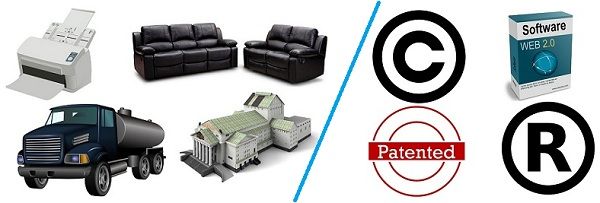
The tangible assets are the class of assets that are physically present, thus they can be seen or touched. On the other hand, the intangible assets represent the assets which are abstract, i.e. they can neither be seen nor touched, but can only be experienced.
Assets are anything having some value, which is owned by an individual or firm and is expected to provide economic benefit in future. It is the basic business requirement that is needed by the company for its smooth functioning. It is broadly classified as non-current assets and current assets. Non-current assets are further divided into tangible and intangible assets.
So, the article provided below attempts to shed light on the difference between tangible and intangible assets.
Content: Tangible Assets Vs Intangible Assets
Comparison Chart
| Basis for Comparison | Tangible Assets | Intangible Assets |
|---|---|---|
| Meaning | Tangible assets are the assets owned by the firm which are having monetary value and is materially present. | Intangible assets implies incorporeal assets which have a certain economic life and an economic value. |
| Form | Physical | Abstract |
| Reduction in value | Depreciation | Amotization |
| Liquidation | Easy | Difficult |
| Residual value | Yes | No |
| Acceptance as collateral | Creditors accept such assets as collateral. | Creditors do not accept such assets as security. |
Definition of Tangible Assets
Tangible assets refer to the long-term physical resources owned by the corporation, which has certain economic value. Corporation acquires such assets in order to carry out business operations smoothly and not for the purpose of sale. It includes plants & machinery, tools & equipment, furniture & fixtures, building, vehicles, land, computers, building, etc. These assets suffer the risk of loss due to fire, theft, accident or any other disaster.
Tangible assets have a useful economic life, after which it becomes obsolete. Depreciation is a method used by the firm to spread the part of asset’s expense over its economic life.
Definition of Intangible Assets
Intangible assets, as its name suggests are the long-term incorporeal resources owned by the company, which have a definite commercial value. It includes goodwill, trademark, copyright, patent, intellectual property, licensing agreements, brand, blueprint, Internet domains, etc.
Such assets are expected to create future cash flows and earnings. They are reported at their net book value, i.e. the gross value of the asset less accumulated amortisation.
Key Differences Between Tangible and Intangible Assets
The points given below are noteworthy, so far as the difference between tangible and intangible assets is concerned:
- Assets acquired by the firm which is having monetary value and is materially present is called tangible assets. Incorporeal assets which have a certain useful life and an economic value is called intangible assets.
- Tangible assets are the assets which are present with the company in their physical form. On the other hand, intangible assets are the assets which so not exist physically rather they are abstract.
- While the reduction in the value of tangible assets is termed as depreciation, intangible assets are amortised.
- Due to the material presence of tangible assets are readily convertible into cash in case emergency. Conversely, it is a bit difficult to sell intangible assets.
- Salvage value is the residual or scrap value of the asset after it is completely depreciated. Tangible assets have salvage value, but intangible assets do not have salvage value.
- Tangible assets are accepted by the lenders while granting a loan to the firm. As against this, intangible assets cannot be used by the firm as collateral to raise loans.
Conclusion
Both tangible and intangible assets are recorded by the company. While tangible assets are extremely important for the company, as it helps in the production of goods and services. On the contrary, intangible assets assist the company in creating future worth. When comparing between the two, both have their pros and cons, but it is also true that intangible assets are much more worthy than tangible ones.






Leave a Reply